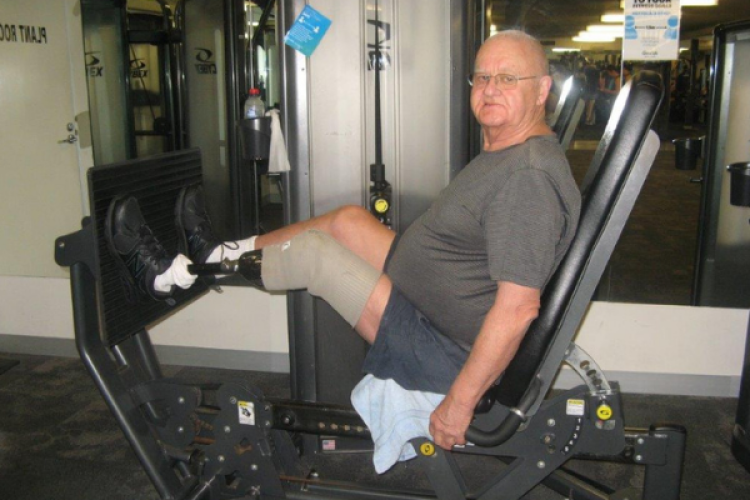- Home
- |
- About us
- |
- News and Events
- |
- Resources
- |
- Contact
- |
- Donate today
- Shop

Early in the summer of 2017, I stubbed my toe on a rock at the beach. For most people this type of incident wouldn’t usually lead to a significant issue, but it did for me. The small wound didn’t heal, became infected and eventually my big toe turned black (necrotic). As with many diabetics, the flow of blood to the lower limbs can be quite impaired which increases the risk of small wounds leading to much bigger health problems.
So, on the 24th of July 2017, I had a partial left foot amputation after all of my toes became necrotic and gangrene set in. Over the next few months, despite having good home nursing and attending hospital visits, the wound still would not heal and I underwent a second amputation below my left knee on the 22nd of November 2017. Ten days later I was admitted to a rehab hospital, and was discharged just before Christmas that year.
In February 2018, I commenced outpatient rehabilitation several set times each week. I participated in that program and was able to walk with my initial temporary (interim) prosthetic in late February 2018.
Since then, I have been cared for by the Prosthetics Unit at the Queen Elizabeth Hospital (South Australia). My first permanent (definitive) prosthesis was made there and I have had several upgrades since which have enabled me to continue doing the things I enjoy. I expressed a desire to return to netball umpiring, so my foot mechanism was changed to enable more flexibility at the ‘ankle’. I was also able to get a ‘wet leg’ so that I could stand to shower rather than having to sit on a shower chair. Earlier this year, I trialled a new leg to make sure it was right for me before I was fitted with the final prosthesis. Incredibly, my socket mould was made with a 3D printer.
From my own experience, and those of several other amputees I met in rehabilitation, I know just how essential it is for people with diabetes to always wear shoes on their feet and not walk barefoot. Walking barefoot can greatly increase a person’s risk of a foot injury (e.g. walking on hot surfaces such as concrete and burning the skin, standing on a nail or pebble and having it tear or cut the skin). This is because people with diabetes often lack of feeling in their feet even small injuries like cuts may not be immediately noticeable but can become a real problem if it leads to the foot not healing and/or becoming infected.
I initially joined a ‘Strength for Life’ class at the local gym but found it more convenient to actually become a gym member so I could attend more frequently and at times more convenient for me. I now do gym sessions three times a week. I also resumed netball umpiring about 12 months ago and umpire two matches each week, but at lower grades than I did before I lost my leg.
I am able to do most of the tasks that I could pre-amputation. I enjoy gardening - especially growing my own vegetables such as tomatoes, zucchini, eggplant, beans and garlic. I also have fruit trees and a large number of orchid plants. I drive with a restricted licence (only automatic cars) and I do all of the meal preparations while sitting in my wheelchair. And I am now a trained Limbs 4 Life Peer Support Volunteer and am pleased to make regular visits or phone calls to people who have just gone through an amputation.
I have a wonderful wife, children and grandchildren who’ve been with me every step of the way. I’m so pleased to be able to say, “life is good!”.
Keep up to date with our latest news, events and information